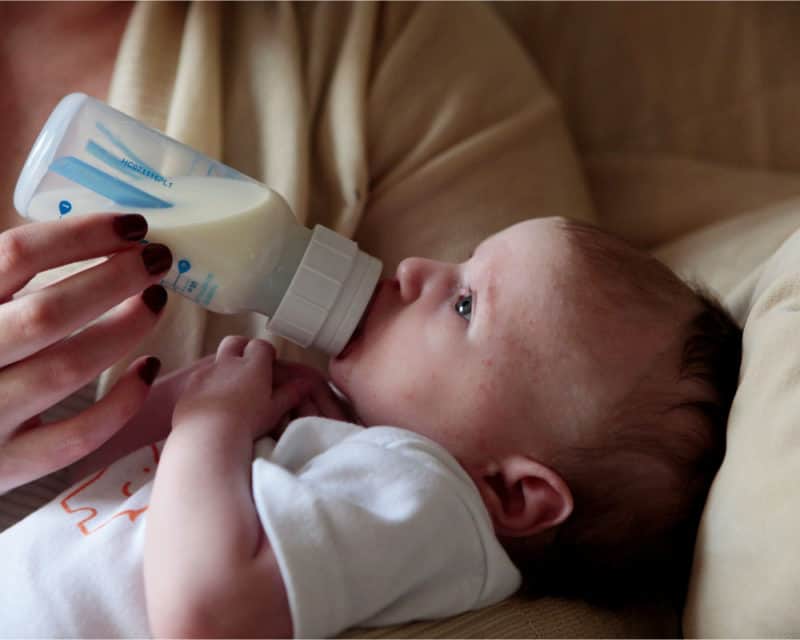Breastmilk is always best for infants. WHO or the World Health Organization has recommended mother’s milk for up to six months. But many mothers are not able to breastfeed because of medical reasons. Sometimes, the babies cannot also suck properly, so they don’t get adequate nutrition. The working mums must also return to work.

Baby formula can be convenient in these situations. Also, bottle feeding allows other family members, like the dad or a caregiver, to share the responsibility. This improves bonding. Besides, you will know how much the baby feeds and the calories she is getting.
The mum can finally return to work or get the much-needed rest. There are indeed several advantages of feeding formula milk to your baby.
The Baby Formulas Now Are More Advanced
Modern-day formulas are much better. They are rich in minerals, iron, and nutrition required for the baby’s growth and health. Take, for example, the HIPP Formula from Germany, a leading European baby formula. Made with a special formula, HIPP can address the special digestive needs of babies. It contains prebiotics and probiotics for improved gut health. The formula doesn’t have synthetic ingredients, which can negatively affect the baby’s development and growth. It looks after the infant’s nutrition, growth, and health.
Formula Feeding Safety Tips

Good baby formula will always be safe for your infant. However, you will still want to be careful. This is why it is essential to take some precautions while formula feeding. Here are some safety tips you should remember.
- Read the list of ingredients carefully before selecting the formula. Look for things that might cause an allergy.
- Best, you run an allergy test first. Only give a small amount of the product to your baby. See how she reacts. Feed using the bottle only if you find everything to be okay.
- Stop feeding the formula if you see an allergy, like rashes, constipation, or diarrhoea. Select another formula milk. But don’t feed it immediately. Give a gap of a couple of days.
- Always check the expiry date before buying. It should be mentioned on the packet.
- Follow the mixing table guideline strictly. Mix correctly.
- The formula you feed must always be freshly mixed. You can refrigerate for a short while, but only in an insulated container.
- Wash the nipples and bottles in hot water.
- Always check the milk temperature before feeding. It should not be too hot or cold. Lukewarm milk is always the best. Pour a few drops on your wrist to check.
- Don’t use the microwave to warm the bottle. A microwave will continually heat unevenly. So there can be hot spots that will burn her mouth. Warm the bottle by placing it under hot running water. You can also use a bottle warmer if you want. Some infants prefer cold milk. It is okay to serve them cold milk. But it would be best to shake the bottle before feeding the baby.
- Make sure that the baby is never on the bed with the bottle. It can cause an ear infection, tooth decay, and even choking.
- Be careful about the nipple. If you find that milk is dribbling from the corners of her mouth and if you hear gulping or sputtering sounds, it means the milk is probably flowing too quickly. But if you find her to be struggling, then probably, the milk flow is not adequate. Replace the nipple or loosen the cap slightly.
Remember, some babies will need practice when the bottle is first introduced. The others have no problems. They start sucking immediately. Also, always be careful if you switch to a new formula. It may take some time before she adjusts to it.
On that note, if your baby doesn’t like the new formula and you have already bought extra packs, you can Sell Formula online, provided it is in unused and sealed condition. Apply online and get a quote for your unopened formula today.
Baby Formula Types

You must also be aware of the different baby formula types. This will help you select the best product for your infant.
The formulas can be broadly divided into the following types, depending on the preparation method and ingredients.
Dairy-based
Avoid cow milk for up to a year. However, some formulas contain modified cow milk protein, which babies can digest easily. Iron, sugar, and vegetable oils are also added to them.
Non-dairy
They are made of soy milk and are good for infants who cannot digest cow’s milk. They are fortified with nutrients, minerals, and vitamins. A paediatrician must always prescribe this.
Organic
The ingredients in these products are without any fertilisers or pesticides. They also don’t have any artificial growth hormones or antibodies. But there can be sucrose in some of them, which can lead to tooth decay.
Lactose-free
Good for infants who are lactose intolerant. Corn starch replaces sugar lactose in these formula milk products.
Hydrolyzed
Infants with allergies or a metabolic disorder can have this. The protein here is broken down into smaller portions. This makes it easier to digest. Once again, it would be best to always speak with a paediatrician before feeding such a formula.
There are also some formulas for premature babies. They are usually lactose-free, non-dairy, and pre-digested.
Select the right formula, and remember the safety tips. Your baby will get all the nutrition she needs. Remember, the formula milk products you will find now are much better than they used to be.


